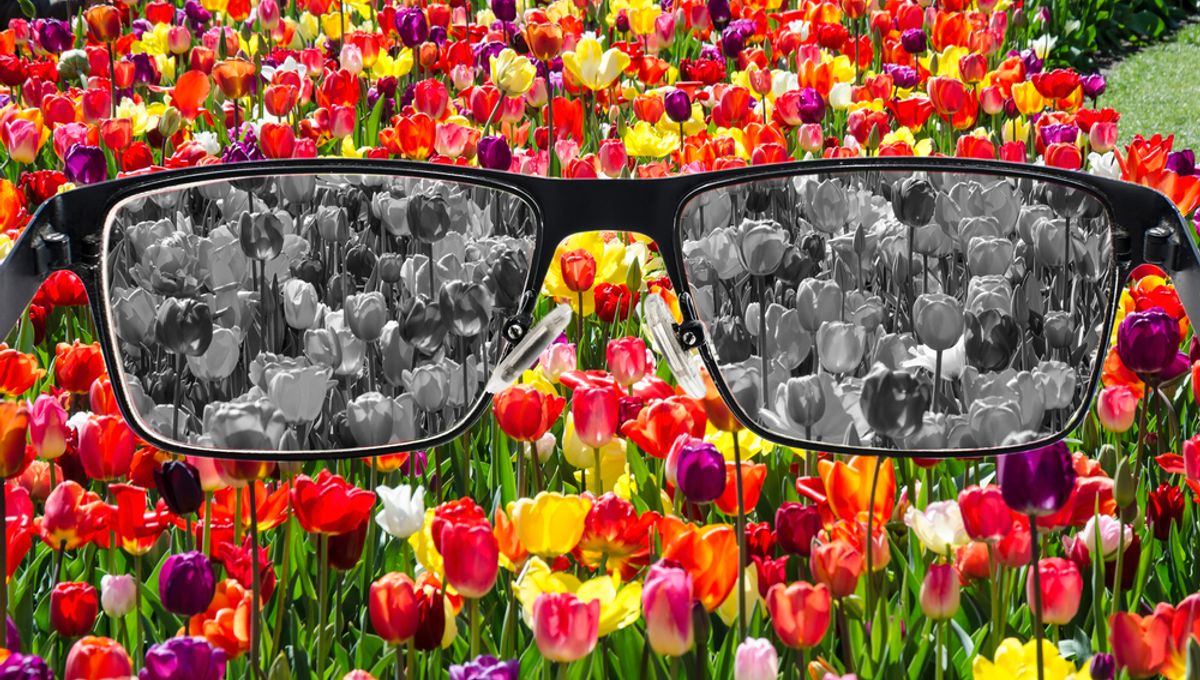
A 35-year-old man with red-green color blindness experienced lasting improvements in his ability to distinguish different colors after taking magic mushrooms, a new case report reveals. According to the authors, this example may indicate the power of psilocybin to alter visual processing capabilities, despite the fact that color blindness is a genetic condition.
The subject suffered from the most common form of color blindness, known as mild deuteranomalia. Affecting around 5 percent of men and 0.4 percent of women, this condition is caused by a defect within medium wavelength sensitive cones, which are the photoreceptor cells responsible for detecting green light.
Describing the case, the study authors explain that the man had previously experienced improved color vision after experimenting with various psychedelic drugs, and therefore decided to document these changes by self-administering the Ishihara Test. Often used to assess color blindness, this test involves a series of mosaics made up of colored dots, arranged to form shapes that are only visible to those who can distinguish between the different colors.
Just before taking a dose of shrooms, the subject achieved a baseline score of 14 on the Ishihara Test. Typically, a score of 17 or above is considered normal color vision, while 13 and below is classified as color vision deficiency (CVD). A score of 14, therefore, sits in a grey area (no pun intended), although the man had previously been diagnosed with mild red-green color blindness by an optometrist.
Immediately after taking the test, the subject ingested 5 grams (0.18 ounces) of dried magic mushrooms, reporting positive sensations but no mystical experiences. Re-administering the Ishihara Test 12 hours later, his score had increased to 15.
Repeating the test once more after 24 hours, the man achieved a score of 18 – which is above the cut-off required for normal color vision. His score eventually peaked at 19 on day eight after his mushroom experience, and remained elevated at 18 four months later.
When the study authors administered the Ishihara Test more than a year later, the subject achieved a score of 16. Though this is below the threshold for normal vision, it is still higher than his self-reported baseline score of 14.
Of course, the fact that the subject self-administered all of the tests up to this point calls into question the reliability of the data. In addition, his continued use of psychedelic drugs beginning 16 days after his initial psilocybin trip makes it difficult to draw any conclusions from the long-term results.
Nonetheless, the study authors state that “a single use of psilocybin may produce partial improvements in CVD extending beyond the period of acute effect, despite this condition typically resulting from a genetic defect.”
“Notably, the subject never attained a perfect score on the test,” they write. “This is consistent with his CVD likely being genetic and the expectation that psilocybin would not produce a DNA change to fully correct these deficits.”
And while the authors are unable to identify the mechanism underlying the man’s improvements, they speculate that psychedelics may induce “alterations in higher-level visual processing” within the V4 region of the brain, which is central to color perception.
Ultimately, though, the researchers are reluctant to make any definitive statements on the back of a single self-reported case, and therefore call for more studies into the role of psychedelics in treating color blindness. “Systematic exploration of this possible phenomenon is needed to confirm our findings, gauge their generalizability, and determine the mechanism of action,” they say.
The study is published in Drug Science, Policy and Law.
Source Link: Man’s Color Blindness Improves After Taking Magic Mushrooms